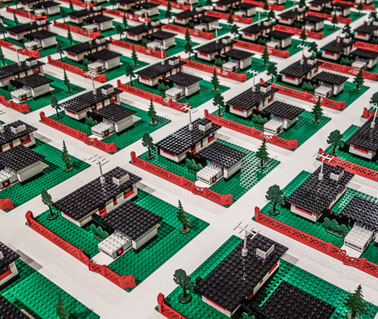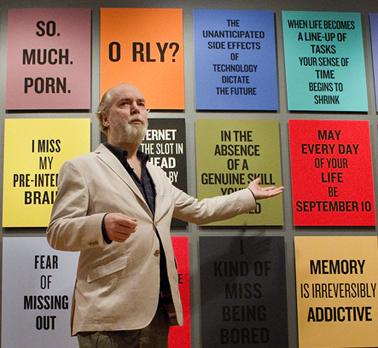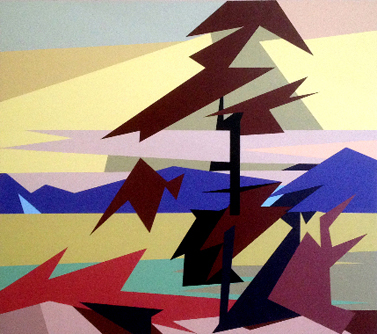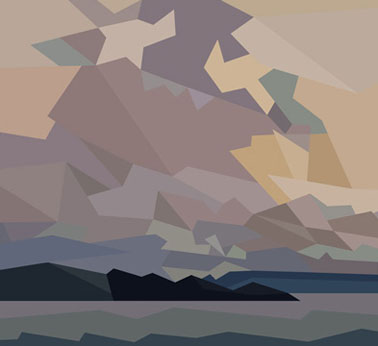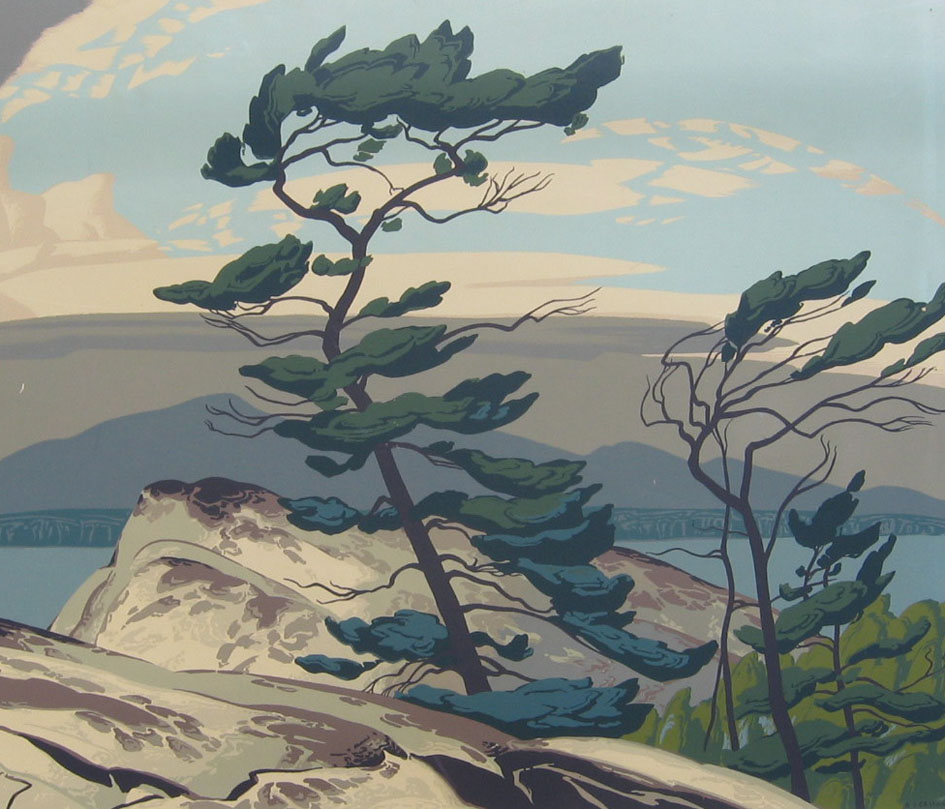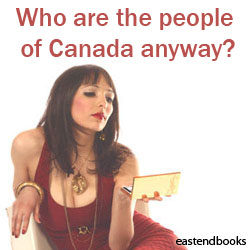Walking winter wonderland with black holes, Alaska pot, Douglas Coupland, and Michael Seward’s Aeschylus
Feb 27th, 2015 | By L. Frank Bunting | Category: Key Current Issues
Former Miss Turkey Merve Buyuksarac faces jail time for posting satirical poem on Instagram about Turkey's President Erdogan. She is the latest figure to face trial for insulting Erdogan, amid fear the country is lurching toward authoritarian rule.
If you live in the North American northeast and are fed up with winter, join the club. My ultimate goal is just to transcend the moment.
So I have decided I like the almost-waist-high snow walls between the sidewalk and the road, glistening in the sunlight. “As we face unafraid / The plans that we’ve made / Walking in a winter wonderland.” Try to enjoy it. Learn to love the cold.
Meanwhile, we do appear to be going on yet another round of strange times beyond climate change. Consider, eg : “Black hole breaks records, swallows up scientific theory … Supermassive black hole at centre of a quasar is 12 billion times more massive than the sun.”
Or : “Bank of America is predicting a massive Tesla collapse.” And : “Alaska quietly becomes 3rd US state to legalize marijuana.” (Is Gov Palin celebrating with a legal batch of pot cookies?)
In the midst of it all my spirit has been somehow vaguely lifted, by the current Toronto showing of the Vancouver writer and visual artist Douglas Coupland’s “everywhere is anywhere is everything is anything.”
The exhibition has been “organized and circulated by the Vancouver Art Gallery and … presented in Toronto by the Royal Ontario Museum and the Museum of Contemporary Canadian Art … concurrently at both institutions … with the generous support of The Keg Steakhouse + Bar, and The Artworkers Retirement Society.”
(MEANWHILE, just before we carry on with Douglas Coupland from Vancouver, the Quebec licence plate watershed in 1978, Toronto/Moncton painter Michael Seward, and the outrageous case of the former Miss Turkey, Merve Buyuksarac,  here are four different You Tube versions of “Winter Wonderland”, in case you need more convincing : by DEAN MARTIN ;  MICHAEL BUBLÉ ; LADY GAGA & TONY BENNETT ; and JASON MRAZ. These are all good covers of what remains one of the best things about winter in the great American songbook. But having now listened quickly to all four, I am surprised to discover that I think the last, by Jason Mraz, is the best. And in all the cold winter weather of 2015 that’s almost certainly a good thing.)
1. 21st-century condition
I’m not yet quite sure just how I’d describe the visual artist side of Douglas Coupland myself.
According to the official blurb for “everywhere is anywhere” etc, he is “one of Canada’s most celebrated contemporary artists, writers and thinkers. Through diverse media ranging from Lego to found materials, painting to installation, he explores issues which affect us all: the 21st-century condition, Canadian cultural identity, the power of language and the pervasive presence of technology in modern life.”
I suppose I found much of Coupland’s “21st-century condition” work interesting but unexceptional. Maybe it is so impressively close to some current real-world mainstream that it just looks like received wisdom.
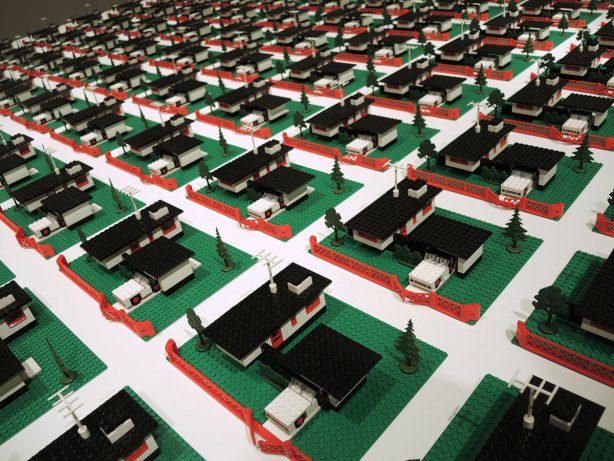
Douglas Coupland, “Modern House, 2014 ... One hundred identical houses built from a kit that was first issued in 1969.” Aka “Lego Suburbanism”.
As my senior advisor in these matters pointed out, what redeems this side of Coupland’s art is that he is almost always clever. (At least I think that’s what my advisor said.) And the great virtue of being so close to the mainstream is that it makes you popular, or at least ought to – and in Douglas Coupland’s case the trick does seem to have worked!
I did especially like something somewhere called “Lego Suburbanism” – but known in the “List of Works’ for MOCCA (Museum of Contemporary Canadian Art) in Toronto as “Modern House, 2014.” Â It has been succinctly described as “One hundred identical houses built from a kit that was first issued in 1969.”

Former Miss Turkey Merve Buyuksarac – a lady of infinite charms, who is being altogether anti-democratically jerked around by the president of her country.
The only other thing you need to know is that the kit in question was from Lego. As one sign of what his kind of art involves, Coupland has also built a number of impressive Lego towers. They struck me as the kind of things in which my quite young grandsons might take some deep interest. But then there is the even recklessly curious child who remains in us all, even in our  “21st-century condition.”
My own biggest quibble, I think, is that “Modern House, 2014” seems to me more a part of the (second half of the) 20th rather than the 21st century condition. (The kit is from 1969, after all!) But maybe this is apt enough, because it is part of “the power of language and the pervasive presence of technology in modern life” that we have lost track of history, and the historical background of the present.
So, to me at any rate, Coupland’s view of our condition now is both apt, because it has also lost track of history, and flawed, because he like the rest of the world needs to cultivate some fresh  historical sensibility to even start to understand where our present condition might lead.
2. Canadian cultural identity
I found I got more out of Douglas Coupland’s exploration of “Canadian cultural identity.” This may partly be because you at least have to confront history in some way to deal with such “a ‘secret handshake’” identity, “not easily understood by others.”
I was unusually impressed, eg, by a series of what at first seemed to be paintings at MOCCA. I believe there were half a dozen, and they all had “Thomson” in their titles.
Here is what the Vancouver Art Gallery, eg, has said about “Thomson No. 15 (Giant’s Tomb, Georgian Bay) 2011” : “Inspired by the iconic works of Emily Carr, the Group of Seven (G7) and Tom Thomson, the paintings and prints that form this series are based on degraded digital images of Canadian masterpieces that were found on the internet. Using a geometric language he created, Coupland has Photoshopped these well-known landscapes and reduced their compositions into flat planes of colour.”
One other among the half a dozen here had “Georgian Bay” (in Central Ontario) in its title – “Thomson No. 10 (On Georgian Bay) 2011.” I have some small familiarity with the geography being depicted or referenced or symbolized or whatever. And I think “Thomson No. 10” and “Thomson No. 15” do a beautiful job of capturing something crucial about it in a fresh new way that still honours the past. Or, as someone at the Vancouver Art Gallery has explained, “ these classic representations of Canadian identity are recast from a 21st-century perspective using contemporary tools.” And for me it works very well.
I picked up another intriguing connection to the more recent or modern/contemporary Canadian past at the at MOCCA branch of the Coupland exhibition in Toronto. (Which I think I did like better than the branch at the ROM, where our quest began.)
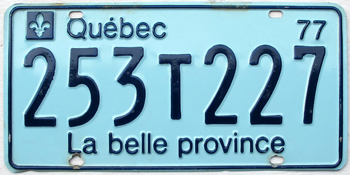 At one end of a large exhibit room a giant shelving unit, made from doubled boards of expensive plywood, held a great variety of found (or “ready made”) objects, in an installation called “The National Pantry, 2014.” One of the objects was a 1976 auto licence plate from Quebec — still with the old motto, “La belle province.”
At one end of a large exhibit room a giant shelving unit, made from doubled boards of expensive plywood, held a great variety of found (or “ready made”) objects, in an installation called “The National Pantry, 2014.” One of the objects was a 1976 auto licence plate from Quebec — still with the old motto, “La belle province.”
As some may recall, in November 1976 the Parti Quebecois won its first provincial election, and formed its first “sovereigntist” government of Quebec. One of its many changes was to replace “the touristic motto La belle province on Quebec’s vehicle registration plate” with “Je me souviens.” This finally took effect in 1978. (By the time René Lévesque’s PQ government had found the washrooms, the 1977 plates had already been made.)
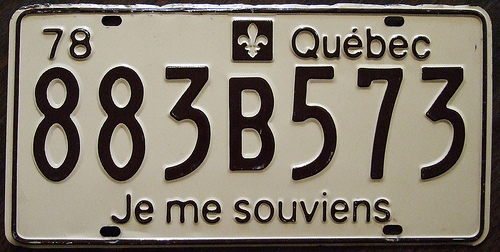 The change endures to this day. After the late 1970s, Quebec will never just be “La belle province” again. Meanwhile, the controversy about just what “Je me souviens” means rages on, in the rest of Canada.
The change endures to this day. After the late 1970s, Quebec will never just be “La belle province” again. Meanwhile, the controversy about just what “Je me souviens” means rages on, in the rest of Canada.
3. Toronto/Moncton painter Michael Seward
I was fortunate in attending Douglas Coupland’s  “everywhere is anywhere is everything is anything” at the ROM (Bloor and University) and then at MOCCA (Queen West and Shaw) with my senior cultural advisor and fine arts instructor, the Toronto/Moncton painter Michael Seward.

Turkish beauty Merve Buyuksarac faces jail time for insulting president. It’s a good thing Stephen Harper doesn’t have a rule like this.
Back in the fall of the year when Stephen Harper first became prime minister of Canada, my colleague Randall White wrote a short review of a Michael Seward show at the Annex Art Centre in Toronto, as part of a post called “The French fall classic 2006 .. and Central Europe in Toronto Art.” (Michael Seward and Randall White had already done a book project together – Â On the Road in the GTA : An eclectic guide to the exurban sprawl of Greater Toronto, 2003.)
Back in those days the main subject of Mr. Seward’s painting might have been very roughly characterized as modern European history in Toronto (whatever that might mean). It would probably be wrong to say that the long reign of Stephen Harper in Ottawa since then has pushed Michael Seward in more abstract directions. But that is nonetheless what has happened.
I can only wholeheartedly recommend his latest more abstract directions. They are happily available for public perusal online at the website “Michael Seward … Visual Artist … ‘When I finish a painting, another piece of the puzzle falls into place for me’.” (Or just CLICK HERE.)
My current favourites among Seward’s newer abstract paintings are : “Aeschylus” (2013) ; “In the Blink of An Eye” (2014) ; Â “infinity” (2014) ; and “Pythagorean Chromatic Fantasy” (2014).
I am told that some additions and other improvements to the Michael Seward website are scheduled for this weekend. And I’m looking forward to them myself. I have been following his career as a painter for more than half a century. It has been like a line that gradually, slowly but steadily, just keeps going up, and up, and up, and up …
4. Outrageous case of former Miss Turkey, Merve Buyuksarac
You may think that I am just ending my blogging notes here with a reference to the outrageous case of a former Miss Turkey, Merve Buyuksarac, so I can post pictures of her, in a vain effort to make this article more interesting.
But you would be only half right. (Well maybe two-thirds – or more … But …)
Ms Buyuksarac apparently faces serious jail time for posting a satirical poem on Instagram about Turkey’s President Erdogan. “She becomes the latest figure to face trial for insulting Erdogan, amid fear the country is lurching toward authoritarian rule.”
I find all this especially sad, because I was enchanted by Istanbul in the late summer / early fall of 2007 – and impressed enough by Izmir. Then it still seemed possible to see Erdogan as some pioneering new kind of Islamic democrat. I at least can’t see anything like this at all today, in 2015. And I wish I could …
